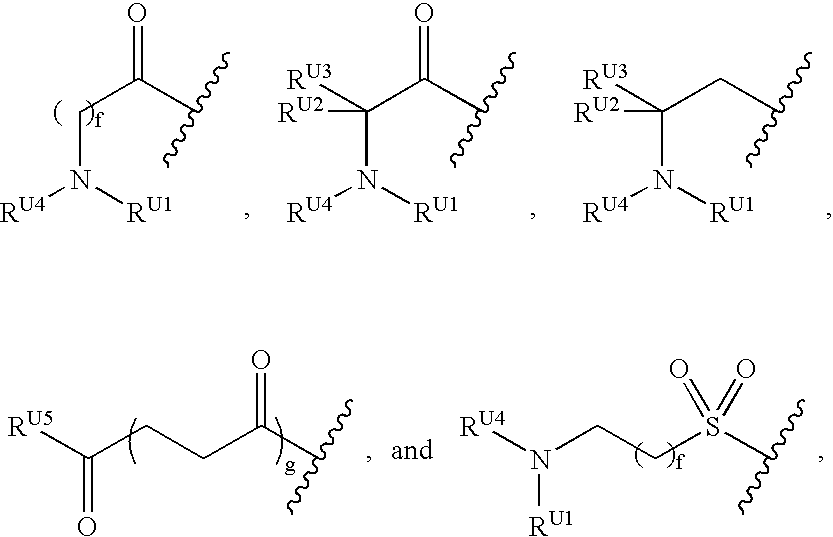Compounds and methods for treating Toll-like receptor 2-related diseases and conditions
a toll-like receptor and receptor-related technology, applied in the direction of phosphorous compound active ingredients, antibacterial agents, immunological disorders, etc., can solve the problems of leaving the body vulnerable to the adverse effects of early infection, and achieve the effect of reducing reducing or inhibiting the activation of the receptor
- Summary
- Abstract
- Description
- Claims
- Application Information
AI Technical Summary
Benefits of technology
Problems solved by technology
Method used
Image
Examples
example 1
Preparation of ER811133
[0115] Step 1. To a solution of 1-pentadecene (23.0 mL, 84.7 mmol) in DCM (200 mL) at 0° C. was added sodium bicarbonate (704 mg, 8.3 mmol) and mCPBA (58.48 g, 338.9 mmol) portion wise. The reaction mixture was allowed to warm up to RT. After stirring at RT overnight, saturated sodium sulfite solution (500 mL) was added to the reaction mixture. The organic layer was dried over sodium sulfate and concentrated in vacuo. Purification of the residue by silica gel chromatography (10% EA / hexane) gave compound 1 (19.10 g, 96% yield).
[0116] Step 2. To a solution of compound 1 (19.1 g, 84.4 mmol) in 90% ethanol (200 mL) at RT was added potassium cyanide (15.38 g, 236.2 mmol). After stirring at RT for 20 hours, the reaction mixture was filtered through sodium sulfate. Purification by silica gel chromatography (30% EA / hexane) gave compound 2 (18.46 g, 86% yield).
[0117] Step 3. To a solution of compound 2 (18.46 g, 72.84 mmol) in DMF (100.0 mL) at RT was added imidaz...
example 2
Preparation of ER811212
[0126] Step 1. To a solution of Fmoc-Ser-OH (25.2 g, 77.0 mmol) in dichloromethane (350 mL) at RT was added TBDPS protected propanolamine hydrochloride (20.0 g, 51.75 mmol) followed by triethylamine (14.5 mL, 104.1 mmol) and 1-[3-(dimethylamino)propyl]-3-ethylcarbodiimide hydrochloride (EDC, 19.85 g, 103.5 mmol). Stirring overnight followed by aqueous work-up and column chromatography gave compound 11 (10.38 g, 32% yield).
[0127] Step 2. To a solution of compound 11 (17.83 g, 28.63 mmol) in dichloromethane (400 mL) at RT was added pyridinium trifluoroacetate (12.26 g, 63.48 mmol). The reaction mixture was cooled to −20° C. and compound 6 (17.60 g, 50.51 mmol) was added. After 2 hours, 30% hydrogen peroxide (14.5 mL, 140.3 mmol) was added and the reaction was allowed to warm to RT. To the reaction mixture was added a solution of sodium thiosulfate (17.2 g) in water (215 mL). Aqueous work-up and column chromatography gave compound 12 (25.37 g, 100% yield).
[0...
example 3
Preparation of ER811230
[0135] Step 1. To a solution of Fmoc-Glycinol (104.4 mg, 0.3685 mmol) in dichloromethane (5 mL) at RT was added pyridinium trifluoroacetate (155.1 mg, 0.8031 mmol). The reaction mixture was cooled to −20° C. and Boc-phosphorylating reagent compound 6 (212.1 mg, 1.652 mmol) was added. After 2 hours, 30% hydrogen peroxide (0.170 mL, 1.665 mmol) was added and the reaction was allowed to warm to RT. To the reaction mixture was added a solution of sodium thiosulfate (240 mg in 3.2 mL water). Aqueous work-up and column chromatography gave compound 20 (150 mg, 74% yield).
[0136] Step 2. To compound 20 (150 mg, 0.27 mmol) at RT was added 4 M HCl in dioxane (1.0 mL). After 20 minutes, solvent was evaporated to give compound 21 (132 mg, 100% yield).
[0137] Step 3. To compound 21 (132 mg, 0.27 mmol) in dichloromethane (1.5 mL) at RT was added N-(3-indolylacetyl)-L-isoleucine (85 mg, 0.29 mmol), followed by DIEA (0.1 mL, 0.57 mmol) and HBTU (117 mg, 0.31 mmol). After s...
PUM
 Login to View More
Login to View More Abstract
Description
Claims
Application Information
 Login to View More
Login to View More - R&D
- Intellectual Property
- Life Sciences
- Materials
- Tech Scout
- Unparalleled Data Quality
- Higher Quality Content
- 60% Fewer Hallucinations
Browse by: Latest US Patents, China's latest patents, Technical Efficacy Thesaurus, Application Domain, Technology Topic, Popular Technical Reports.
© 2025 PatSnap. All rights reserved.Legal|Privacy policy|Modern Slavery Act Transparency Statement|Sitemap|About US| Contact US: help@patsnap.com



